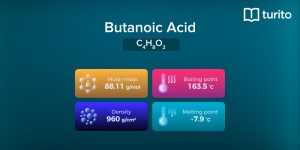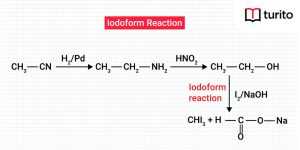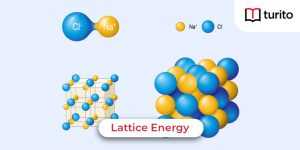Oxalic Acid
You must have heard about a health issue called kidney stones. They are solid crystal bundles that commonly develop in the kidney. They can also grow in other urinary tract areas, such as the bladder, ureters, and urethra. The most common classes of kidney stones are created when calcium binds with oxalate in the urine to form calcium oxalate.
How do these oxalates form? What are oxalates? How are they related to oxalic acid? Are they naturally occurring compounds? These are some general questions that occur in the mind of every person who knows a little bit about kidney stones.
This article is designed to get the answer to these questions.
What Is Oxalic Acid?
It is an organic compound that found its place in many fruits and vegetables. Oxalic acid is the simplest dicarboxylic acid in a colorless crystalline form. The molecular formula of oxalic acid is H2C2O4.
The IUPAC name of oxalic acid is Ethan-1,2-dioic acid. Generally, oxalic acid also exists in dihydrate with the formula H2C2O4.2H2O.
When dissolved in water, it produces a colorless solution. In terms of acidic strength, due to the presence of two electron-withdrawing -C=O bonds, it is much more acidic than acetic acid. Oxalic acid is a good reducing agent, having conjugated base oxalate.
What Is Oxalate?
The term oxalate is interchangeable with oxalic acid in nutrition science. Oxalates are also a naturally occurring compound found in humans and animals. Its molecular formula is (C2O4)2−(C2O4)2−. It is used as a chelating agent for metal cations.
Oxalate is produced in the body on its own or can be from food. On metabolizing, vitamin C also gets converted into oxalates. Excess oxalates in the body can lead to kidney stones.
Oxalate is a molecule composed of two carbon and four oxygen atoms. The overall charge of oxalate is negative two, and hence, it is considered a dianion.
History of Oxalic Acid or Oxalate
Oxalic acid was first secluded by the German chemist Johann Christian Wiegleb in 1769. In 1776, it was first synthesized by the Swedish chemist Karl Wilhelm Scheele. He produced oxalic acid by oxidizing sugar using nitric acid called saccharic acid or sweet acid.
By 1784, scientists proved that the sugar and oxalic acid present in nature are alike. The German chemist Friedrich Wöhler produced oxalic acid by treating cyanogen with aqueous ammonia in 1824. It was considered the first synthesis of a natural product.
Structure of Oxalic Acid and Oxalate
Oxalic acid:
The structure of oxalic acid is similar to the substituted ethane molecule, where both carbons are substituted with carboxyl groups. The figure below shows the structure of oxalic acid:
Oxalic acid exists in two kinds of polymorphic forms in its anhydrous state.
- In its first form, it develops a chain-like intermolecular structure due to hydrogen bonding.
- In its second form, it develops a sheet-like structure to the compound at the intermolecular level. It also happens due to hydrogen bonding.
Oxalate:
In the oxalate structure, two C-atoms in the center are covalently connected by a single bond. Each carbon is bonded with two O-atoms, as shown in the figure:
Oxalates are unstable molecules because of the single bonds between the carbon and oxygen atoms. Two double bonds are formed between the oxygen and carbon atoms to increase stability. The dotted lines show the resonance of a double bond between atoms. Oxalate contains two double bonds to increase stability.
Manufacturing of Oxalic Acid
Today, there are many ways to produce oxalic acid. Some of them are
1. Laboratory method:
It is a conventional way to produce oxalic acid. In this method, sucrose oxidation occurs in concentrated nitric acid. A catalyst, vanadium pentoxide, is also used in this reaction.
C11H22O11 + HNO3 → (COOH)2
2. Industrial method:
It is a three-step mechanism process.
Step 1: The heating of sodium formate in the presence of sodium hydroxide gives sodium oxalate.
2HCOONa → (COONa)2
Step 2: In the presence of calcium hydroxide, conversion of sodium oxalate to calcium oxalate takes place.
(COONa)2 → Ca(COO)2
Step 3: Formation of oxalic acid by treating calcium oxalate with sulfuric acid.
Ca(COO)2 → (COOH)2
3. By oxidation of ethylene glycol:
In this method, ethylene glycol is oxidized in the presence of dilute nitric acid. This reaction undergoes many oxidation intermediates.
(CH2OH)2 → (COOH)2
Properties of Oxalic Acid
1. Physical Properties:
- Molecular formula: H2C2O4H2C2O4
- Molecular weight: 90.03gm/mole (anhydrous)
- Appearance: Orthorhombic colorless crystals
- Odor: Odorless
- Boiling point: 1570°C at 1.013hPa (anhydrous)
- Melting point: 1010°C (anhydrous)
- Sublimation point of an anhydrous form of oxalic acid: 190°C
- Sublimation point of its dihydrate state: 1500°C
- Density: 31.90gm/cm3 (anhydrous)
- Solubility: Soluble in water, pure alcohol, and ether
2. Chemical Properties:
- Oxalic acid is a strong acid.
- The number of hydronium ions produced by acid is its valence factor. Oxalic acid produced two hydrogen ions. So, its valence factor is two.
- Because both COOH groups of oxalic acid are polar, they tend to form hydrogen bonds with water molecules. Oxalic acid acts as hydrophilic due to its polar nature. It shows the solubility of oxalic acid towards polar solvents.
- Oxalic acid behaves as a reducing agent.
Uses of Oxalic Acid
There are many ways to use oxalic acid. Some of them are:
- Oxalic acid can be utilized as a key ingredient in dyeing processes.
- It can remove rust and, therefore, can aid in cleaning or bleaching purposes.
- Beekeepers wield a 3.2% solution of oxalic acid or its vaporized form.
- Oxalic acid helps remove different food stains, ink, mustard, and other types of pigments.
- It is the reducing agent and can be applied to developing photographic film.
- It helps in removing calcium from the wastewater.
- Oxalic acid is also ideal for polishing almost all types of stones.
- It can operate in the disposal of waste wood.
- Oxalic acid is employed to sterilize equipment.
- Oxalic acid is a chief reagent in lanthanide chemistry.
- It is used in cleaning minerals.
Oxalic Acid and Divalent Ions
When the titration between Zn2+ and 0.01m oxalic acid solutions is performed against KMnO4 solutions, you will get a linear relationship between the amount of utilized oxalate and the metal ion concentrations.
A similar thing occurs in the case of a titration between Ca2+ and 0.01m oxalic acid solutions performed againstKMnO4 solutions.
But higher segments of the oxalate ions partake at an equivalent metal ion concentration. The prohibited action becomes more noteworthy when the metal ions in the solution are in 1:1:1 molar ratios. In all cases, the proportion of Mg2+ results in less precipitation of the oxalates than the other two metals.
Oxalic Acid and Health
Oxalic acid corrodes tissue in the body. When over ingested, oxalic acid results in the disposal of calcium from the blood. Kidney damage can be the aftermath as calcium oxalate withdraws calcium from the blood, obstructing kidney nephrons.
- Inhalation of oxalic acid fumes is harmful as it may result in severe irritation and burns to the throat, nose, and respiratory area.
- Ingestion of oxalic acid can result in liver-related damage and blood flow through urine.
- When oxalic acid comes in touch with skin, severe itching and burning agitation prevail, dermatitis, and cyanosis of the fingers. It is possible to suffer from ulceration in the case of prolonged skin contact.
- Touching oxalic acid with the eyes may result in corrosive effects.
- Chronic exposure to oxalic acid may lead to upper respiratory tract inflammation.
Disposal Considerations
Despite the benefits, oxalic acid also causes harm to the body. It is irreversible to a limited extent. Hence, there is a need to dispose of wastes generated by oxalic acid properly.
Although it is not counted as hazardous waste, a few qualities of hazardous waste may be widespread. Therefore, it demands proper analysis for the establishment of specific disposal necessities.
Conclusion
You are now well-versed with oxalic acid and oxalates. Most commercially used oxalic acid contaminates sulfuric acid and alkali. The alkali cannot be removed by the recrystallisation method using water. Still, using 10 – 15% hydrochloric acid, the removal can be done by recrystallisation. This article provides almost all the facts you require on oxalic acids.
Frequently Asked Questions
1. What are oxalates used for?
The main uses of oxalates are:
- It can reduce mineral absorption in the body.
- It can combine with fibre in your food.
- A high level of oxalates in the food can cause kidney stone problems.
- It helps to get rid of calcium by binding with it.
2. What are the food items that are not allowed to be taken on a low oxalate diet?
Some food items that are not allowed to take on a low oxalate are:
- Fruits: kiwis, rhubarb, raspberries, dates, tangerines, oranges, etc.
- Vegetables: chard, spinach, beets, potatoes, turnips, yams, okra, carrots, etc.
- Legumes: fava beans, navy beans, refried beans, kidney beans, etc.
- Nuts: walnuts, almonds, macadamia nuts, pistachios, cashews, etc.
- Seeds: pumpkin seeds, sunflower seeds, etc.
- Chocolate and cocoa
- Grains and starches: couscous, brown rice, bulgur, millet, corn grits, cornmeal, etc.
- Beverages: chocolate milk, hot chocolate, tomato juice, tea, etc.
- Soy products: tofu, soy burgers, soybeans, etc.
3. What are oxalates containing food items?
Many food items have shown the natural presence of oxalates in them. Some of them are:
- Rhubarb
- Beet Greens
- Beets
- Spinach
- Endive
- Swiss Chard
- Sweet Potatoes
- Cocoa Powder
- Turnip Greens
- Peanuts
- Star Fruit

Relevant Articles
Butanoic Acid – Structure, Properties, Uses
Butanoic Acid The carboxylic acid, butanoic acid, has the structural …
Butanoic Acid – Structure, Properties, Uses Read More »
Read More >>What is Iodoform? Characteristics and Uses
Iodoform The formula for Iodoform is CHI3. It is biotic …
What is Iodoform? Characteristics and Uses Read More »
Read More >>Lattice Energy – Explanation, Factors & Formulas
Lattice Energy Lattice energy evaluates the intensity of the ionic …
Lattice Energy – Explanation, Factors & Formulas Read More »
Read More >>Lead Acetate – Definition, Properties, Uses
Lead Acetate Have you ever licked lipstick when you sketch …
Lead Acetate – Definition, Properties, Uses Read More »
Read More >>






















Comments: